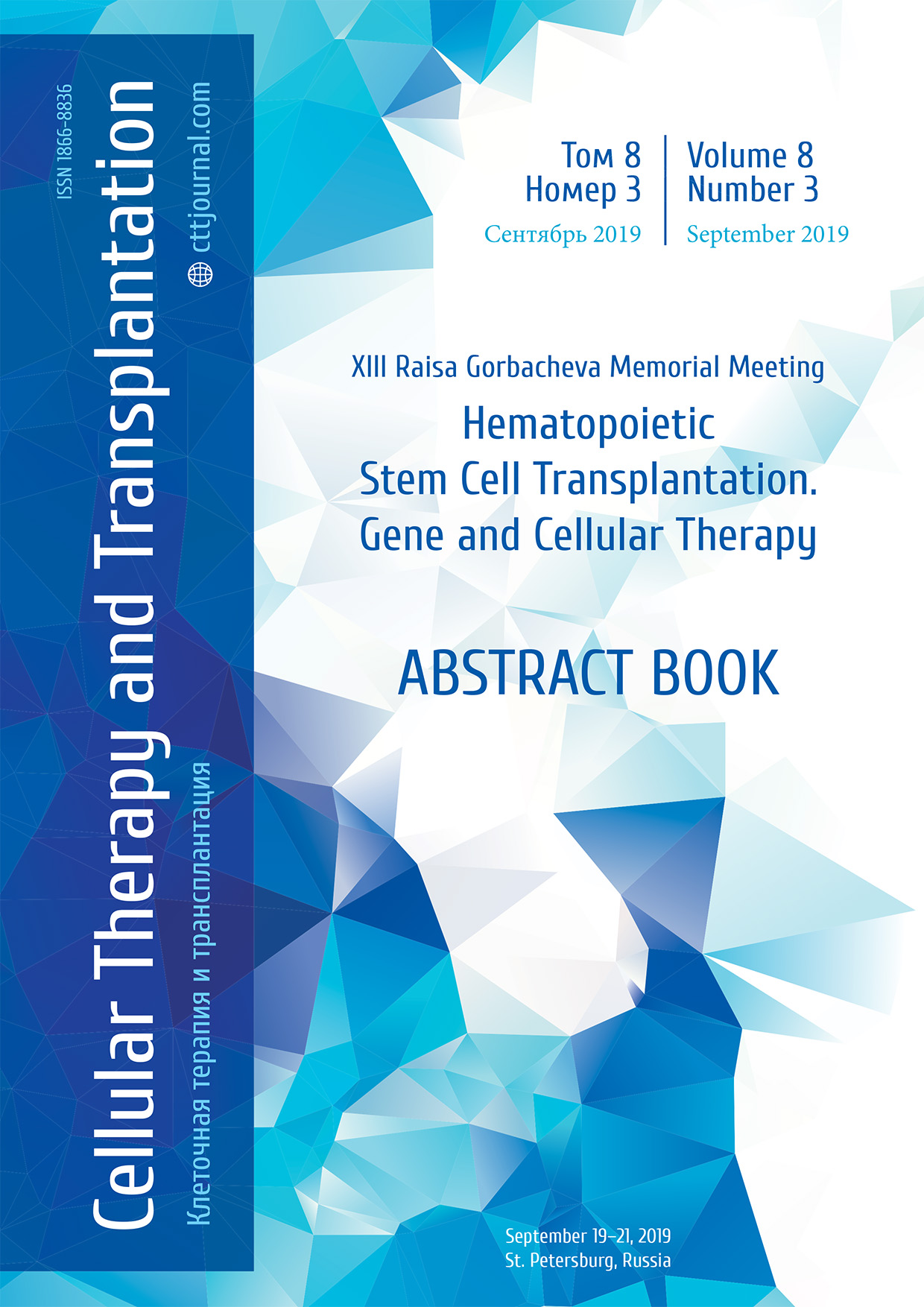Choice of optimal GVHD prophylaxis regimen in unrelated transplantations of non-manipulated hematopoietic stem cells in children
Natalia V. Sidorova1, Alexey S. Slinin2, Kirill I. Kirgizov1, Ekaterina A. Pristanskova1, Veronika V. Konstantinova1, Alexandra E. Burya1, Elena B. Machneva1, Oxana L. Blagonravova1, Elena V. Skorobogatova1
1 The Russian Children’s Research Hospital of N. I. Pirogov Russian National Medical University, Moscow, Russia
2 Dmitry Rogachev National Medical Center of Pediatric Hematology, Oncology and Immunology, Moscow, Russia
Summary
Graft-versus-host disease (GVHD) is one of the most frequent and dangerous complications of allogeneic hematopoietic stem cell transplantation (allo-HSCT). Therefore, the choice of an optimal GVHD prophylaxis is an important component of the supportive care. Hence, the principal aim of our retrospective study was to evaluate different regimens for GVHD prevention following matched unrelated (MUD) allo-HSCT in children.
Patients and methods
During the period of 2003-2019, we performed 256 MUD HSCT in children. Gender distribution was as follows: males, 64.8% (n=166); females, 35.2% (n=90). Median age was 7.1 y.o. (8 months to 17 y.o.). The primary diagnoses were: acquired aplastic anemia (14%, n=36); myeloid leukemias (39%, n=100); lymphoid leukemias (17%, n=43); primary immune deficiency (7%, n=19); congenital storage disorders (13%, n=32); hereditary hematopoetic depression (5%, n=14); hematophagocytic lymphohistiocytosis (2%, n=4); other rare diseases (3%, n=8). 242 HSCTs (94.5%) were carried out for the first time; second HSCTs were performed in 14 cases (5.5%). Stem cell sources for grafting were: bone marrow (BM) was used in 76% of cases (n=174); peripheral blood stem cells (PSC), in 24% (n=62). 204 patients (79.7%) received 10/10 MUD HSCT, and 52 pts (20.3%), were compatible by 9/10. Conditioning regimens contained various agents, thus being consistent with treatment protocols for particular diseases. GVHD prophylaxis included: tacrolimus (Tacro), cyclosporin A (CsA), methotrexate (Mtx), mycophenolic acid (MMF), in combinations: Tacro/Mtx (n=98), Tacro/MMF (n=102), Tacro/Mtx+MMF (n=3), CsA/Mtx (n=24), CsA/Mtx+MMF (n=2), CsA/MMF (n=14). The duration of observation was from 3 months up to 16 years (median of 8.9 years).
Results
Incidence of acute GVHD (aGVHD) in the group with non-manipulated BM grafts was lower in the CsA/Mtx, i.e., 38%, with overall survival (OS) rates of 93% (p=0.039). The aGVHD incidence in patients who received PSC was lower in the Tacro/Mtx, and in Tacro/MMF groups, i.e., 13% in each group, but with the OS rates of 70% and 34%, respectively (p=0.012). Incidence of severe-grade aGVHD (stage 3-4) was most often observed in BM group with the Tacro/MMF prophylaxis regimen (19%), and, in the PSC group, with the CsA/Mtx/MMF prophylaxis regimen (8%), with lower OS levels in these groups. i.e., 49% and 50%, respectively (p=0.12, p=0.257). When using the BM grafts, the rate of the OS showed significant differences, depending on aGVHD prevention regimen (p=0.03). OS value was higher in the PSC-treated group when using CsA/MMF (83%), and CsA/Mtx (78%, p=0.52).
Conclusion
The source of stem cells should be taken into account when choosing a regimen for GVHD prophylaxis during MUD HSCT in children. The CsA/Mtx combination when using BM as a stem cells source was associated with significantly increased OS level in our study, and reduced the incidence of aGVHD, when applying BM as a source of stem cells. We did not find a significant impact upon OS levels when PSCs were used as a source of HSCT, at different aGVHD prophylaxis regimens. However, higher OS levels in the CsA/MMF PSC and CsA/Mtx PSC groups may become significant upon expansion of this clinical study.
Keywords
Allogeneic hematopoietic stem cell transplantation, unrelated donor, acute graft-versus-host disease, GVHD prophylaxis.


